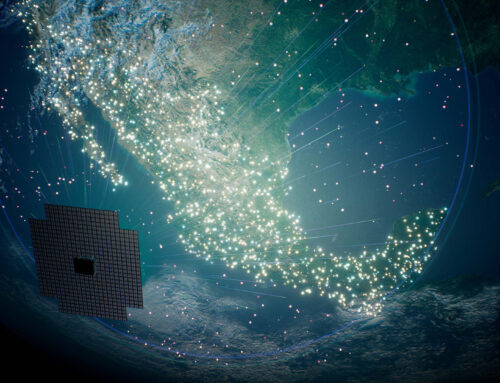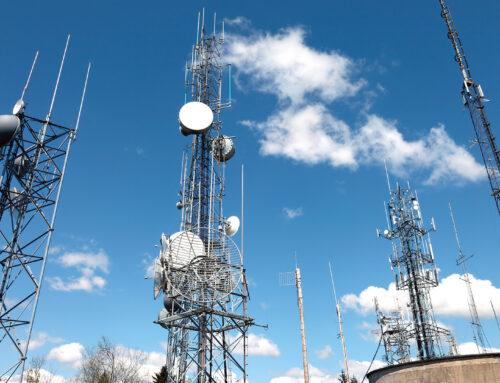
Using mmWave Radars, Researchers Eavesdrop on Cell Phone Conversations
Scientists have found a way to use mmWave radars to eavesdrop on cell phone conversations with high accuracy. Using the millimeter-wave radar, they were able to decipher audio content with an 83% accuracy rate from up to six meters away.
The study, conducted by researchers at Pennsylvania State University (Penn State), used off-the-shelf automotive radar sensors and a novel processing approach to detect the vibrations of a cell phone’s earpiece while simultaneously recording audio from the other side. The researchers then used an algorithm that compared the two signals to determine what was being said on the other side of the call.
The technology could have serious implications for privacy, as it can be used to listen in on conversations from afar without the knowledge of those involved. The researchers suggest that the technology should be regulated or restricted to prevent its misuse.
The study is an important step towards using mmWave radars for applications in security, surveillance and acoustic sensing. By further advancing this technology, it could be used to detect dangerous situations or monitor large areas with greater accuracy than traditional audio-based systems.
This research shows that mmWave radar technology can be used to detect audio signals from a distance and can be an effective tool for acoustic sensing. With the right safeguards, it could become a powerful tool for monitoring large areas or detecting dangerous situations. Additionally, it serves as a reminder that we must remain vigilant and take steps to protect ourselves from potential privacy violations.
This research was presented at the 2022 Institute of Electrical and Electronics Engineers Symposium on Security and Privacy. The findings are further evidence that mmWave radars can be used for more than just automotive applications and have the potential to revolutionize acoustic sensing. With this technology, it is possible to detect audio signals from a distance without the knowledge of those involved, presenting serious privacy concerns. It is essential that we take steps to regulate and protect against the misuse of this technology.
Mahanth Gowda and Suryoday Basak’s research demonstrates that mmWave radar technology can be used for acoustic sensing, providing a powerful tool for monitoring large areas or detecting dangerous situations. However, it must be done responsibly and with safeguards in place to protect people’s privacy. The research presented at the 2022 Institute of Electrical and Electronics Engineers Symposium on Security and Privacy
“As technology becomes more reliable and robust over time, the misuse of such sensing technologies by adversaries becomes probable,” Basak said. “Our demonstration of this kind of exploitation contributes to the pool of scientific literature that broadly says, ‘Hey! Automotive radars can be used to eavesdrop audio. We need to do something about this.’”
mmSpy nickname
mmSpy is a breakthrough in wireless communication surveillance. It works by utilizing the unused portions of the radio spectrum that are typically used for 5G. The radar operates in millimeter wave frequencies, specifically between 60 and 64 GHz and 77 to 81 GHz. This allows mmSpy to capture data from areas beyond line-of-sight with incredible accuracy and clarity. The data gathered can then be used to detect movement and other activities, such as talking on a cellular phone. This makes mmSpy an invaluable tool for security purposes, as it has the capability to monitor areas that would otherwise be difficult to surveil. Furthermore, the technology is designed in such a way that it doesn’t interfere with existing communication systems. As a result, mmSpy allows authorities to conduct surveillance while preserving the privacy of those in the vicinity.
This is an important advancement that has far-reaching implications for law enforcement and security operations around the world. With its revolutionary design, mmSpy provides an effective means of monitoring activities from afar without compromising personal privacy. Thanks to this revolutionary technology, authorities can now monitor areas that were previously difficult to surveil. Thus, mmSpy has the potential to revolutionize wireless communication surveillance. It is an invaluable tool that could greatly improve security operations and ensure the safety of citizens all around the world.
The pre-processing via MATLAB and Python modules is a crucial part of the research, as it helps to eliminate any hardware- or artifact-related noise from the raw radar data. This ensures that the machine learning algorithms used in this study have access to clean data in order to accurately classify speech and reconstruct audio.
The accuracy rate of the system is highly dependent on the distance between the radar sensor and the phone. When placed just one foot away from the phone, the processed speech had an accuracy rate of 83%, which dropped down to 43% accuracy when placed at a distance of six feet. This suggests that in order for this technology to be truly effective, it needs to be used in close proximity to the target device.
The team’s findings have shown that speech reconstruction attacks can be used to extract sensitive information from digital recordings, such as passwords and personal data. To mitigate the risk of this type of attack, the researchers suggest using a variety of techniques including noise reduction, audio encryption, and secure storage. Additionally, they are working on further improvements to their methods to better protect against and exploit the vulnerability for good. With their improved approach, they hope to be able to more accurately reconstruction speech from digital recordings and filter, enhance, or classify keywords with greater accuracy. Ultimately, this research provides a valuable insight into how we can best protect our data from malicious actors and use it for legitimate purposes.
The methodology developed by Basak is also applicable in other areas. For instance, it has the potential to be used in smart home systems, building-monitoring systems and industrial machinery. It would enable engineers to track vibrations over time and better understand wear and tear on different devices or components. This could help identify when regular maintenance needs to be performed before it would typically be required.
Moreover, the same approach could be used for health monitoring systems as well. For example, vibrations in different parts of a person’s body could be monitored to detect any changes that may indicate an underlying medical condition. Consequently, this could help doctors provide more accurate diagnoses and effective treatments to patients. By implementing this methodology, a range of applications can be developed to improve safety, efficiency and accuracy of different systems.
Medical Implications of mmWave Radar Systems
This could be used, for example, to detect falls in elderly people living alone or medical emergencies in industrial settings.
In order to apply this technology in a helpful way, the team is looking into ways to automate responses when an issue is detected. For instance, they are exploring the use of AI-based algorithms that can automatically call for help if someone has fallen or alert medical personnel if a health parameter changes in a dangerous way.
The team’s research is already showing promise and they are now working to scale their eavesdropping attack with mmSpy, so that it can be used in practical applications. This could potentially revolutionize the way we use radar technology and create a safer environment for everyone.
Basak and his research group specialize in developing solutions to improve wireless sensor network systems. They design methods that support the transfer of data securely and efficiently, while also ensuring that the systems are reliable and resilient. In addition, they strive to create strategies for dealing with issues such as power consumption, scalability, latency, failure tolerance and security threats.
The research group is also working on the development of autonomous systems that can be used for various applications. These self-learning, automated processes use data collected from sensors and other sources to create smart decision-making models. Such systems are being used in healthcare, environmental monitoring, agriculture, transportation and more.
Basak’s research group is also actively exploring the use of machine learning and artificial intelligence to improve the performance of these networks. By utilizing advanced algorithms, they hope to develop solutions that can provide better decision-making capabilities and create more efficient systems for a wide range of applications.
The research group’s work has been recognized widely in the industry with numerous awards and accolades. As Basak mentions, “We are proud of our accomplishments and look forward to continuing to develop new technologies that can revolutionize the way we live and work.”
By pushing the boundaries of technology, Basak’s research group is helping create a more connected world for us all. With their groundbreaking innovations, they are helping make the world a better place. We look forward to seeing what new solutions and breakthroughs they will come up with in the future!
Other RF News, Information & Resources
About Precision Millimeter Wave
We are a growing microwave & millimeter wave manufacturing & engineering company of parts, sub-assemblies and more for both passive & active based components.
Contact us for your needs.












